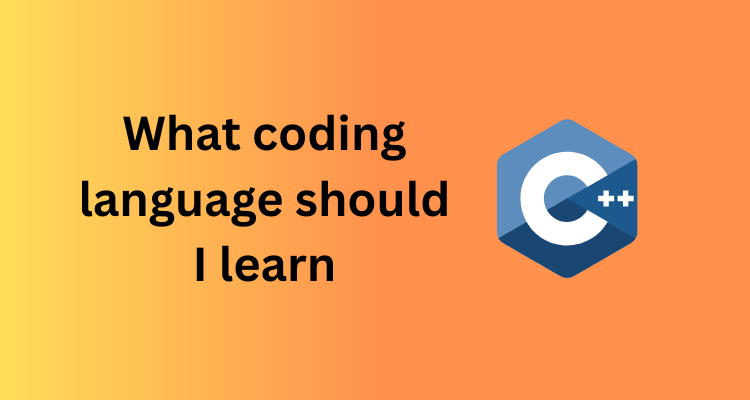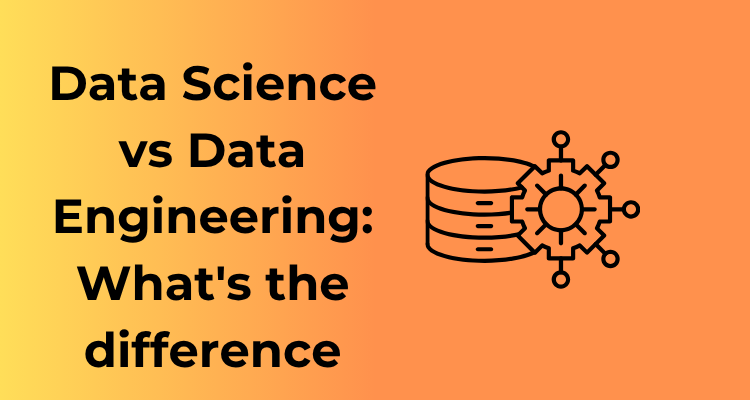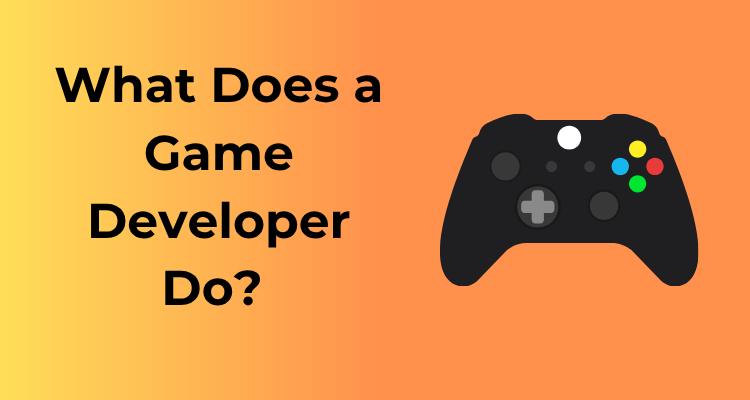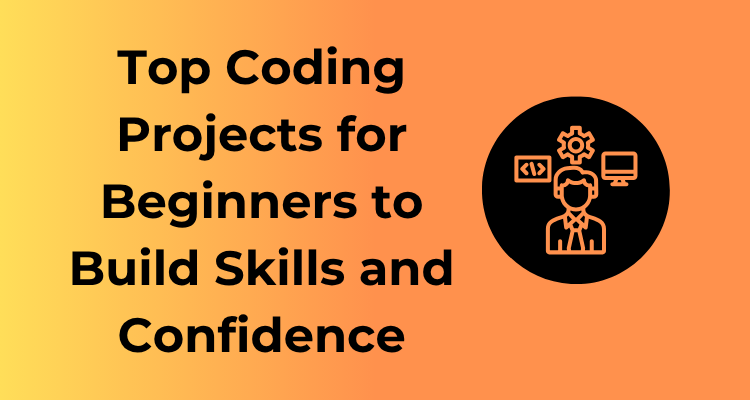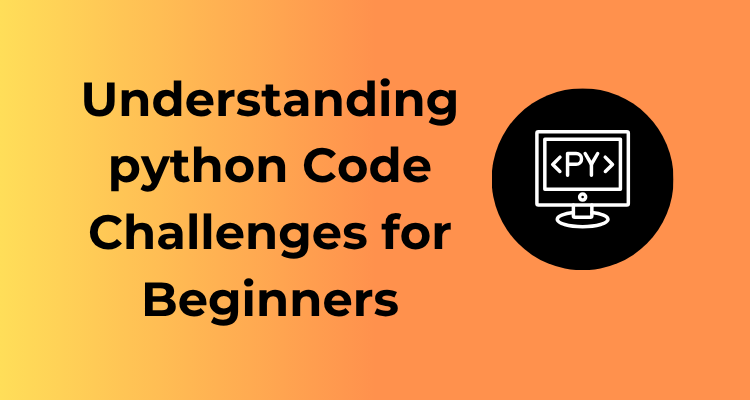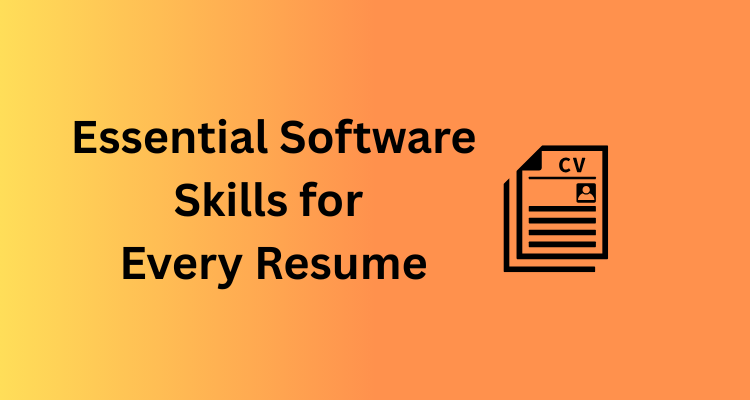Starting your journey in coding can feel a bit like standing in front of a colorful candy store—there are so many choices, but which one is “just right” for you? Well, before you dive headfirst into learning a random programming language , take a step back and ask yourself some important questions. Defining your goal is like drawing a map before setting out on a road trip—it makes the journey smoother and more purposeful!
Why Do You Want to Learn Coding?
This might seem obvious, but it’s worth diving into. Are you curious about technology in general, or are you looking to switch careers, build an app, or automate tasks? Your purpose directly influences which language suits you best. Here are some examples:
- If you’re interested in web development, you might lean towards languages such as HTML/CSS, JavaScript, or Python.
- Want to develop mobile apps? Swift (for iOS) or Kotlin (for Android) would be worth exploring.
- Thinking about breaking into data analysis or machine learning? Python or R could be great starting points.
By zeroing in on your “why,” you’re already narrowing down the right language!
What’s Your End Goal?
Picture the end of your coding journey. What do you see? Are you working as a full-time programmer, freelancing, or simply adding coding as a useful tool for your current profession? Your destination matters in selecting the right starting point.
- For long-term coding careers, learning versatile and in-demand languages like Python, Java, or C++ can serve as a solid foundation.
- If you’re learning coding to enhance your existing job (like marketing or accounting), consider learning Excel VBA or Python for automation.
- For hobbyists and tinkerers, creative and beginner-friendly languages like Scratch or even Lua (used in game modding) could be a fun way to start.
How Do You Learn Best?
We all learn in different ways, and luckily, coding languages come with various levels of learning difficulty. Reflect on how you absorb knowledge:
- Do you prefer a language with a lot of practical tutorials? Python could be your best friend.
- If you’re a visual learner who loves interactive examples, check out languages like JavaScript paired with graphic libraries like p5.js.
- Want deep insights and a logical approach? More structured languages like Java can help you build problem-solving discipline.
By aligning your learning habits with the language resources available, you save yourself frustration down the road!
What’s the Time Commitment?
Lastly, ask yourself how much time you’re ready to devote. Do you have 10-15 hours a week, or is it just a one-hour evening activity? Some languages, like Python, are quicker to grasp and perfect for shorter-term learning. Others, like C++, take more time and effort but can help you master intricate system-level programming.
In summary: Asking yourself what, why, and how before choosing your first coding language is a game-changer. There’s no perfect language that suits everyone, so decide based on your individual goals. Trust me—putting in this small effort now will help you cut through the noise and get the most out of your coding journey. So, what’s your goal?
The Connection Between Industries and Programming Languages

When you’re diving into the world of programming, one of the most fascinating—and important—realizations is how specific programming languages are linked to different industries. Just like each profession has its tools of the trade, every industry has its preferred languages to get the job done efficiently. Let’s chat about this connection in a way that helps you make clearer decisions about your coding journey!
Why Industries Choose Specific Languages
Each programming language has unique capabilities, strengths, and even quirks. These traits often align with the demands of specific fields. For example, some languages are built for speed, some for simplicity, and others for processing enormous amounts of data. Naturally, industries gravitate toward options that fit their needs like a glove. Picking the right language for the industry you’re passionate about is like choosing the perfect camera for photography—compatibility is key!
Popular Industries and Their Go-To Languages
Here’s a quick rundown of some key industries and the programming languages they rely on the most:
1. Web Development: If designing websites and web apps excites you, start thinking about HTML, CSS, JavaScript, and Python. While HTML and CSS ensure a site looks fabulous, JavaScript brings it to life, and Python, with its Django and Flask frameworks, makes backend magic happen.
2. Data Science and Analytics: This field is all about crunching numbers, analyzing patterns, and predicting the future (well, sort of!). Python and R are absolute favorites here. Python’s versatility and libraries like Pandas and TensorFlow complement R’s exceptional statistical capabilities.
3. Game Development: Crafting those immersive worlds? You’ll be looking at C++, C#, and Lua. C++ is a powerhouse for developing game engines, while C# is your go-to for tools like Unity. Lua, with its lightweight nature, also sneaks in for seamless scripting.
4. Mobile App Development: Creating apps for iPhones? You’ll bump into Swift. Prefer Android? Time to make friends with Java and Kotlin. These languages ensure that mobile experiences are as smooth and responsive as users have come to expect.
5. Finance and FinTech: Money makes the world go round, and financial systems are often built using Java, Python, and even SQL for managing databases. Python, thanks to its libraries like NumPy, simplifies complex financial modeling.
How Does This Help You?
By identifying the connection between industries and their preferred programming languages, you can tailor your learning journey. Interested in building apps? Then mastering Java or Swift makes sense. Curious about artificial intelligence? Prioritize Python. Before you dive headfirst, ask yourself what industry excites you the most.
Beginner-Friendly Languages for Your First Steps

So, you’ve decided to dive into the world of coding—excellent choice! It’s an exciting and endlessly creative journey. But now comes the tricky question: where do you begin? Choosing a programming language for your first steps can feel like picking a movie without knowing your favorite genre yet. Don’t worry—I’ve got your back! Let’s break it down and explore some beginner-friendly coding languages that make getting started a whole lot easier.
Why Start with a Beginner-Friendly Language?
If you’re new to coding, you’ll want your first experience to be as smooth as possible. Beginner-friendly programming languages are designed to get you comfortable with coding concepts while avoiding overly complicated syntax. In essence, they let you focus on learning how to think like a coder, instead of getting stuck debugging on day one. These languages are often intuitive, have tons of resources online, and allow for quick progress, which can keep you motivated.
Top Picks for Beginner-Friendly Languages
- Python: Hands-down one of the most beginner-friendly options out there! Python has a clean, readable syntax that almost looks like English, making it perfect for new programmers. It’s also versatile—you can use Python for web development, data analysis, AI, and even game development. Plus, there are countless tutorials and user-friendly online courses to guide you.
- JavaScript: Ever wondered what makes websites interactive? JavaScript is your go-to! This language is beginner-friendly because you can see results almost immediately—whether it’s a button that changes color or a fun animation. Plus, since it’s the backbone of most websites, learning JavaScript can feel practical and rewarding from the get-go.
- Ruby: Ruby is another language known for its simplicity and beginner-friendly philosophy. Its syntax is human-readable (almost poetic), and its supportive community makes learning less intimidating. Ruby is particularly famous for web development, especially with the popular Ruby on Rails framework.
- Scratch: If you’re completely new and want to start with the absolute basics, Scratch is a fantastic visual programming language. Aimed at beginners and younger learners, it’s more drag-and-drop than text coding, but it introduces essential concepts like logic, loops, and conditions.
What Makes a Language Friendly to Beginners?
Still wondering what exactly makes a language “easy”? Here’s what to look for:
- Simplicity: The syntax should be intuitively readable.
- Instant feedback: Seeing results (like printed text or interactive elements) quickly helps keep you motivated.
- Community Support: A vibrant user base ensures you’ll find answers, forums, tutorials, and pre-made tools when you hit roadblocks.
- Versatility: A language you can apply to various types of projects lets you explore and find what you enjoy most.
Decoding Popularity: Market Demand for Coding Languages

Ever wondered why some coding languages get all the limelight? The tech world is buzzing with options—Python, JavaScript, Java, C#, and many more. But when you’re diving into coding, understanding market demand can truly make a difference in shaping your success. Let’s explore what drives these languages’ popularity and how you can align your learning to land the job or gig you’re aspiring for.
Popularity vs. Practicality: Why It Matters
It’s easy to be lured by the allure of “popular” programming languages, but here’s the deal: popularity isn’t just a popularity contest. It’s often a reflection of how much a language is actively needed in the industry. Employers need programmers fluent in these languages to run everything from websites to apps to software systems. By focusing on in-demand technologies when learning to code, you increase your chances of being hired or freelanced—pretty smart play, right?
What the Job Market is Telling Us
So which languages are companies clamoring for? Here are a few of the heavy hitters:
- Python: Universally loved for its simplicity and versatility, Python shines in data science, AI, and web development. It’s often ranked as a top language, which makes learning it a safe bet for career growth.
- JavaScript: The king of web development! JavaScript runs everything from interactive websites to mobile apps, making it inescapable (in a good way!) if you’re eyeing a career in front-end or full-stack development.
- Java: The backbone of enterprise software and Android app development, Java continues to enjoy a steady demand in large-scale businesses.
- C#: Microsoft enthusiasts, this one’s for you! C# is a go-to for game development (via Unity) as well as enterprise applications.
- SQL: Data-driven companies can’t thrive without databases, and SQL is the keystone for almost every data-related job out there.
The Power of Trends: Where Things are Headed
Tech evolves fast, and keeping an eye on rising trends can give you an edge. For example, Rust is gaining traction for its safety and performance, while Kotlin is enjoying the spotlight in Android development. Languages like TypeScript are adding an edge to JavaScript programming. Staying aware of these shifts in the market will ensure you don’t get stuck learning technologies that are phasing out.
Choosing Your Path: A Mix of Passion and Practicality
While job demand should factor into your decision, don’t discount your personal interest. Love coding games? Go for C#. Fascinated by artificial intelligence? Dive into Python. When you mix what the market needs with what excites you, you’re bound to find more motivation and better long-term success. It’s about striking a balance between what you love and what’ll pay the bills!
Where to Research Market Demand
Want to dig deeper? Check out job boards like LinkedIn, Indeed, or Glassdoor to see which programming languages are most mentioned in job ads—this is a live pulse of employers’ needs. Dive into Stack Overflow’s yearly developer survey or GitHub’s language trend reports to get industry insights straight from the pros.
Speed, Versatility, and Ease: Prioritizing Your Preferences
Let’s be real – coding languages aren’t one-size-fits-all. Choosing the right language often depends on your personal priorities. Are you looking to build fast, efficient programs? Is versatility key because you’re dabbling in multiple types of projects? Or are you in search of a language that’s simple to learn and use? Let’s break this down so you can figure out what matters most to you.
1. Speed: Because Time is Money
If speed is at the top of your priority list, you’ll want a language known for efficiency and performance. Think about applications where every millisecond matters—like gaming, AI, or financial systems. Some languages are built for high-speed execution and can handle large volumes of data without breaking a sweat. Here are a few examples:
- C++: An absolute beast when it comes to speed. It’s widely used in game development, real-time systems, and high-performance apps.
- Rust: A newer language making waves for being both fast and safe. It eliminates common errors like memory leaks while maintaining excellent performance.
- Go (or Golang): Developed by Google, Go shines for its simplicity and blazing speed, ideal for backend work and streaming data.
Pro tip: Prioritize speed when working on resource-intensive apps or systems where performance is critical. But remember, faster languages can come with a slightly steeper learning curve—so be prepared to invest some time.
2. Versatility: The Jack-of-All-Trades Approach
Are you the type who’s exploring web development today, data science tomorrow, and maybe mobile apps next week? If so, you need a language that can flex in multiple directions—a true all-rounder. Some versatile choices include:
- Python: Praised for being the Swiss Army knife of coding, Python works for web apps, machine learning, automation, and more.
- JavaScript: Master this, and you can cover both front-end and back-end development (thanks to Node.js).
- Java: Reliable and time-tested, Java powers everything from mobile applications to enterprise systems.
These versatile languages are amazing for beginners or curious coders who aren’t set on one niche yet. They let you experiment without locking yourself into a specific industry early on.
3. Ease: Keeping Things Simple
Sometimes, simplicity is underrated. If coding feels like learning a foreign language (spoiler: it kind of is!), starting with something beginner-friendly can ease your journey. Here’s where ease-focused languages shine:
- Python: Yes, we’re mentioning it again. Its clean syntax mimics natural language, making it a dream for newcomers.
- Ruby: With a focus on simplicity and productivity, Ruby emphasizes human-readable code.
- Scratch: Not technically a coding language, but this visual language is perfect if you’re totally new and just learning logic basics.
Languages that prioritize ease let you focus more on understanding coding concepts and less on fighting cryptic syntax.
4. Deciding What’s Right for You
How do you pick between speed, versatility, and ease? It’s all about understanding your goals. Here are some questions to ask yourself:
- What kind of projects excite me?
- Am I willing to spend more time learning a more powerful language?
- Do I want to dabble in everything or focus on one area?
How Long Will It Take to Learn? Setting Realistic Expectations
Ah, the age-old question: “How long will it take to learn to code?” If you’re asking this, you’re definitely not alone. It’s a valid query, but the answer (drumroll please) is: it depends. Don’t worry—it’s not as vague as it sounds. Let’s break it down together and set some realistic expectations while keeping you motivated!
Factors That Influence Your Learning Timeline
Before we throw out any numbers, let’s understand what might speed you up—or slow you down—on your coding journey. Here are some key factors:
- Time Commitment: Do you plan to code full-time, after work, or just on weekends? The more consistent you are, the faster you’ll see progress.
- Your Goals: Are you learning for fun, aiming for a new job, or launching an app? Different goals require different depths of knowledge.
- Prior Experience: If you have experience with logic, math, or even analytical thinking, certain coding concepts will feel familiar!
- The Language You Choose: Some coding languages, like Python, are easier to pick up (think weeks), while others, like C++, may require months of practice to feel confident.
A Rough Timeline for Key Milestones
To keep things practical, here’s an approximate timeline based on regular, focused learning:
- The Basics (1-3 Months): You’ll learn the syntax, write your first “Hello World,” set up your environment, and understand foundational concepts like loops, variables, and functions.
- Building Small Projects (3-6 Months): By now, you’ll create mini-projects or clones of simple applications. It’s the perfect time to learn debugging and get comfortable with problem-solving.
- Intermediate Competency (6-12 Months): Here, you’ll feel confident tackling more complex problems, building practical projects, and even interacting with APIs. Freelancing or applying for junior roles? Possible!
- Expert-Level Mastery (Years+): Truth alert: you’ll never stop learning. Coding is a lifelong journey of staying up-to-date with new tools and techniques. Happy news? It gets easier with time.
Tips to Fast-Track Your Progress
If you’re eager to learn quicker, there are a few ways to hack your growth (in a legal, ethical way):
- Practice Daily: Even 30 minutes of daily practice beats a 7-hour binge once a week.
- Mix Theory With Projects: Apply what you learn immediately! It’s much easier to retain concepts when you build something with them.
- Find a Mentor or Join a Community: Having an experienced coder to guide you can save hours of frustration.
- Be Patient With Yourself: You’re not competing with anyone else. Learning to code is an individual process, and that’s okay!
The Role of Online Communities and Resources in Your Learning Path
Learning how to code can feel overwhelming at times, but you don’t have to go it alone! In today’s digital age, the power of online communities and educational resources can serve as a game-changer in your coding journey. Let’s dive into why they matter so much and how you can make the best use of them.
Why Online Communities Are Your Secret Weapon
While coding is often seen as a solitary endeavor, it thrives on collaboration. Online communities are filled with people just like you—learners, enthusiasts, hobbyists, and professionals—all eager to share knowledge. Participating in these groups can provide more than just technical insights. They offer encouragement, networking opportunities, and even troubleshooting help when you’re stuck on a particularly tough project.
- Support When You Need It: Stuck on a bug at 10 p.m.? Chances are someone halfway across the globe is awake to lend a helping hand. Platforms like Stack Overflow and Reddit’s r/learnprogramming are brimming with experienced developers who’ve probably resolved a similar problem before.
- Inspiration and Motivation: Seeing what others are building can spark ideas and keep you motivated. Many communities share success stories, project showcases, and learning milestones, which can make your coding path feel less daunting.
- Stay Updated: Programming is a fast-changing field. Online communities are fantastic for keeping up with the latest trends, tools, and changes in your chosen language.
Where to Start? Online Communities Worth Exploring
Ready to jump into the conversation? Here’s a quick list of tried-and-true options:
- Stack Overflow: The holy grail for coders. It’s perfect for specific questions and offers a treasure trove of past solutions.
- GitHub: Collaborate on real-world projects and learn through hands-on contributions.
- Discord/Slack: Many developer groups and coding bootcamps have active channels where you can connect with fellow learners in real-time.
- Meetup: For those interested in in-person connections, Meetup groups often host local or virtual coding meetups.
Harnessing the Power of Online Resources
Alongside communities, online learning platforms are your go-to companions for structured tutorials and exercises. The beauty of these websites and tools? They cater to all skill levels and allow you to learn at your own pace.
Platforms You Should Know
Some standout online resources for self-paced learning include:
- freeCodeCamp: Comprehensive, free, and beginner-friendly—it’s loved by many first-timers.
- Codecademy: Known for its interactive approach, it’s great for visual learners.
- Coursera and edX: Perfect if you’re seeking university-level courses to deepen your understanding.
Be sure to also explore YouTube where creators like The Net Ninja or Traversy Media break down coding concepts in bite-sized, digestible videos. Explore until you find a teaching style that resonates with you.
Tips for Making the Most of Online Communities and Resources
Feeling excited to dive in? Here are some quick tips so you can maximize these tools:
- Engage actively: Don’t just consume resources—engage! Answer questions, share your progress, and seek feedback.
- Be selective: Too many resources at once can feel overwhelming. Pick one or two platforms that suit your goals and stick with them.
- Ask questions wisely: When engaging in forums, be detailed when describing your problem. It helps others help you effectively.

